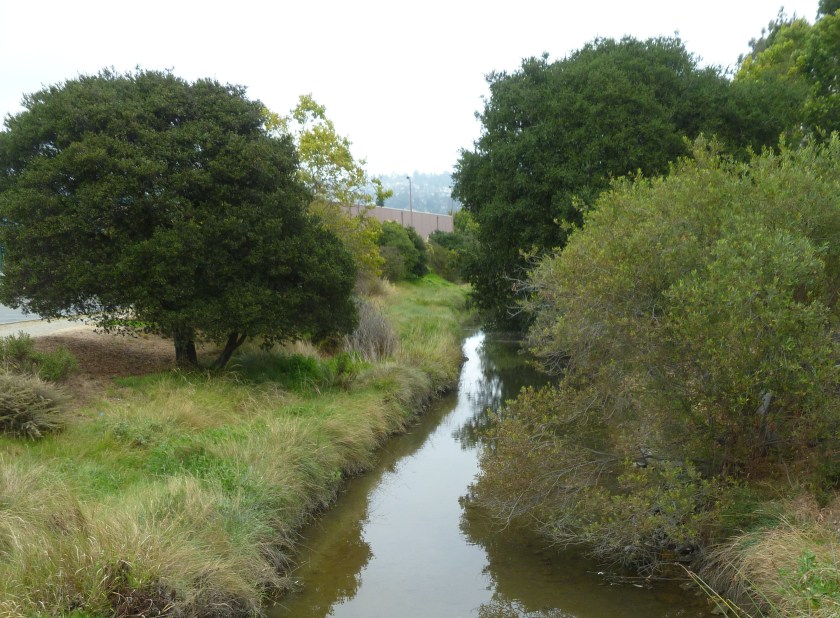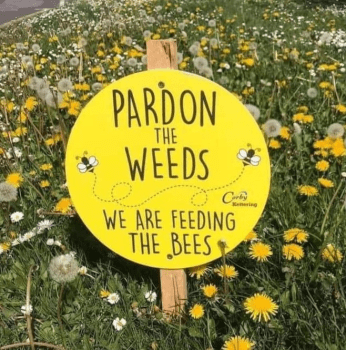Native plant advocates frequently claim that the eucalyptus forest is a “biological desert.” We find no evidence to support that claim. We are as likely to see a diverse understory in the eucalyptus forest as in oak woodland and more likely than in a redwood forest where there is considerably less light. We have reported on several studies that found comparable diversity of wildlife in native and non-native forests.
The abundance and diversity of insects is particularly important in evaluating the health of an ecosystem because they are near the bottom of the food web. We won’t find many birds in an ecosystem where there are few insects, for example. We have reported on several studies that found comparable abundance and diversity of invertebrates such as insects in native and non-native landscapes.
Still, the myth persists that eucalyptus forest is devoid of life. In this article we will address this specific statement in the assessment of the California Invasive Plant Council (Cal-IPC) of Blue Gum eucalyptus: “loss of native plant forage and migratory disruptions may have greater long-term impact on wider diversity of wildlife species, including invertebrates and microorganisms in soil.” Cal-IPC provides no studies to support this speculative statement. Therefore, we will tell you about a specific study that refutes the assumption of Cal-IPC: “Similar breakdown rates and benthic macroinvertebrate assemblages in native and Eucalyptus globulus leaf litter in Californian streams” (1)
First, we will provide a few definitions for our readers who may not have encountered some of the more esoteric jargon before. The benthic zone is the sub-surface layer of bodies of water. Here is a brief list of some of the common names of macroinvertebrates that lay their eggs in water that were found in this study: mayflies, caddisflies, stoneflies, and midges. These insects and their larva are food for fish and birds and in turn, fish are food for other animals.

Three small streams in Alameda and Contra Costa counties in the East Bay were selected for this study because they have sections of shore with eucalyptus forest and sections with native trees (oak, bay, big leaf maple, and alder). Like many ecological studies we have read over the years, this study hypothesized that it would find reduced abundance and diversity of insect populations in the streams bordered by eucalyptus based on the assumption that eucalyptus is “lower-quality food resource for macroinvertebates than a mixture of native litter.” As we will, see, they did not find evidence that supported their theory. We are fortunate that their study was published, because the chances that a negative finding will be published are significantly smaller than studies with positive results.
We will briefly describe the methods used by this study because they establish the credibility of the study. They sampled insect populations directly from the streams as well as using mesh bags of the litter of the two types of forest: eucalyptus forest and an assemblage of native tree species. The sampling was done in three different seasons and the litter bags were sampled after 26, 56, and 90 days. They used two measures of diversity and two metrics related to pollution tolerance, as well as two measures of abundance of invertebrate species in litter bag samples to describe the insect population.
Here are their key findings:
- “[Differences in y]early litter input rates in reaches bordered by Eucalyptus and by native vegetation were not statistically significant.”
- Species diversity and pollution tolerance did not differ significantly between eucalyptus and native sites, with one exception. There was a higher proportion of one complex of insects (Ephemeroptera, Trichoptera, Plecoptera) in the eucalyptus samples.
- The abundance of the five most common taxa (species or genus) did not differ significantly between eucalyptus and native sites with the exception of mayflies which were on average twice as abundant in eucalyptus sites.
- One metric of diversity (Shannon Diversity Index) found greater species diversity in eucalyptus sites compared to native sites.
- The decay of litter in the bags of eucalyptus litter was similar to the bags of native litter, i.e., “leaf mass loss was not significantly different between eucalyptus and native leaves.” Decay of litter is a proxy for the amount of litter consumed by insects and microorganisms in the litter and by extension the population of these organisms in the litter: “…the importance of biotic factors (bacteria, fungi, macroinvertebrates) in litter breakdown is greater than that of the physical fragmentation.”
The study then compared these findings with similar studies conducted all over the world. When they found differences between their results of those of other scientists, they explained them in terms of local differences in conditions. For example, in European native forests, more deciduous trees are found than in Californian native forests.
Only one similar study was conducted in North America, specifically in two streams in southern California: “… [it] compared the decomposition of Eucalyptus litter to native species and found it slower than that of Alnus [alder], faster than that of Rhus [sumac] and similar to Quercus agrifolia [coast live oak]. Both the decomposition rate and the biomass of macroinvertebrate colonizers differed much more between…two streams than among the litter species.”
Both the results of their study, and the review of the literature of similar studies, led the researchers to this conclusion:
“In coastal California, we conclude that presence of small patches of riparian Eucalyptus even though it influences the species composition of plant litter in streams, has no noticeable influence on diversity and composition of benthic macroinvertebrates that colonize the litter. Furthermore, based on similarities in leaf decomposition, Eucalyptus litter appears likely to be as suitable a substratum for macroinvertebrate colonization as some of the components of the native litter in the three streams tested. Thus, the overall condition of these small streams is not markedly degraded by the presence of patches of riparian Eucalyptus and is unlikely to be improved by their removal.”
Looking for Godot
Looking for evidence of the harm that eucalyptus does to our ecosystems is like waiting for Godot. No one has found any evidence yet. We venture to say that they can keep looking, but we think they are looking for something that isn’t there. If we keep pointing out that there is no evidence to support their indictment against eucalyptus, will they give it up eventually? All we can do is keep trying.
We congratulate those with the tenacity to slog through this tedious post. Your reward is more good news for our harmless eucalyptus.
*********************************
Igor Lacan, Vincent Resh, Joe McBride, “Similar breakdown rates and benthic macroinvertebrate assemblages in native and Eucalyptus globulus leaf litter in Californian streams,” Freshwater Biology, 55, 739-752, 2010.

I like your in depth study and looking into all aspects of this issue. You did say, “We won’t find many birds in an ecosystem where there are few insects, for example.” This should be qualified because it depends on the season for birds predominantly feeding on seed, berry and nut rather than insects. Breeding times increase insect foraging (for feeding young), even though the adults of some species will eat insects all year when available. Fall and winter in our area increase high fat source preference likes nuts and seed. Acorns are especially beneficial to many birds wintering in Northern climates. It also depends on bird migration to what they might find available. Plus certain birds only eat nuts and berries by their beak’s design. I am sure it must be different in San Francisco with your more constant climate as to what birds are attracted or migrate through. You might want to check with an ornithologist or biologist to see the percentage of insect eaters in your area. I can’t speak to the eucalyptus being a “biological desert” or “lower-quality food resource for macroinvertebates than a mixture of native litter.” I would have my doubts on both counts, logically thinking. Life lives in all habitats, even the most inhospitable to us. As for leaf decay and breakdown, our oaks persist for a very long time without breakdown. Nature sees to this for a reason too. I did a post on this interesting fact of nature. I would bet the eucalyptus too has a biological reason for how long it remains intact in leaf litter and what nutrients it affords.
Thanks for the interesting and important details, which also apply to California and the Bay Area. Many of our birds eat nectar, fruit and berries, but they feed insects to their nestlings because of their need for the protein. And many other birds are also insect eaters as adults. As far as we know, everything you say applies to the Bay Area as well.